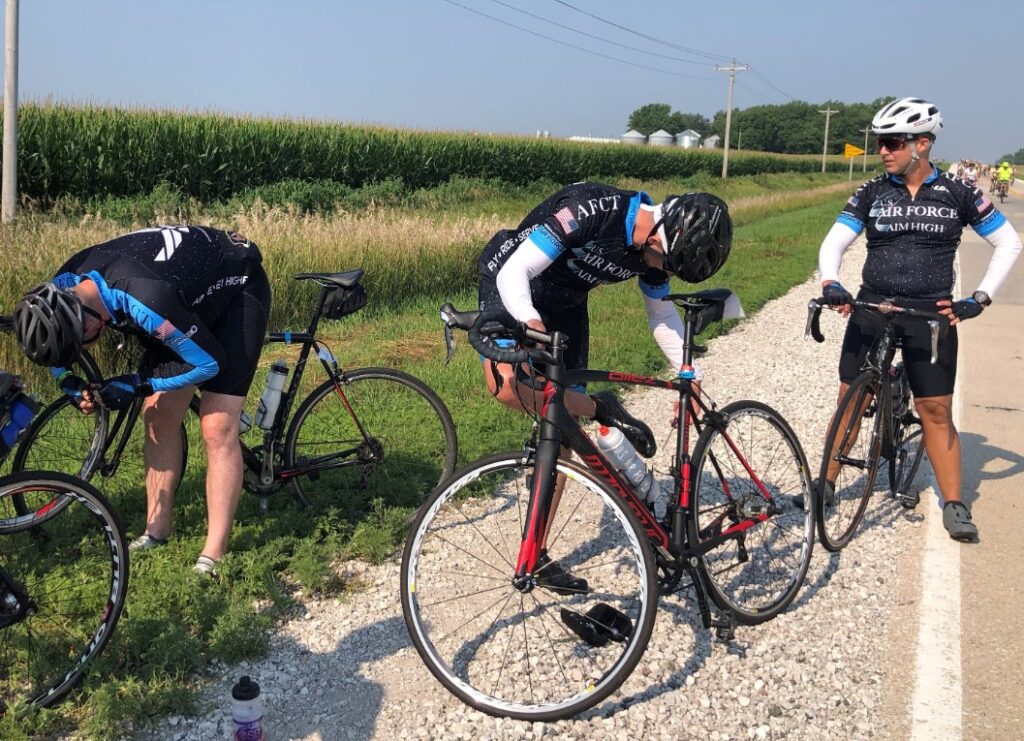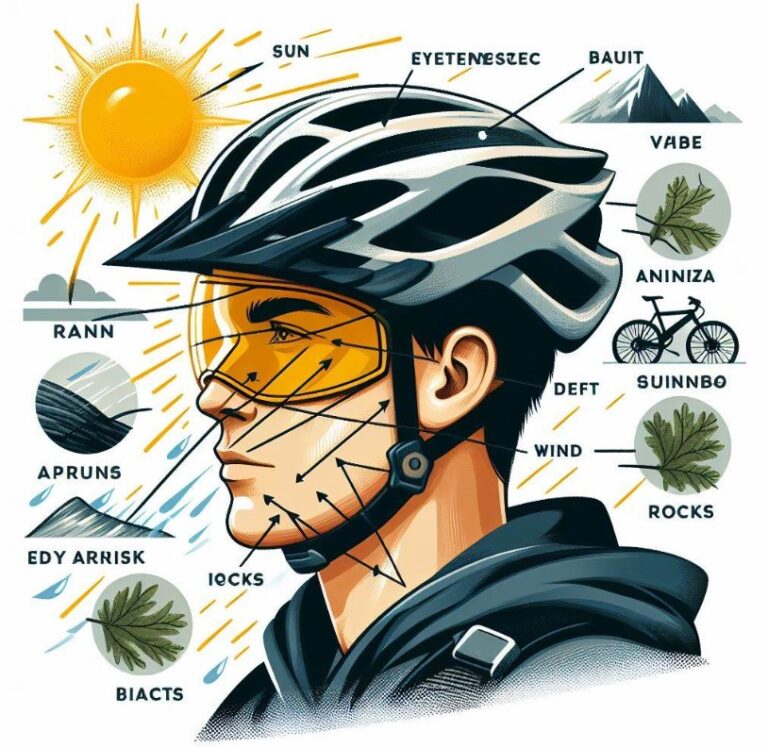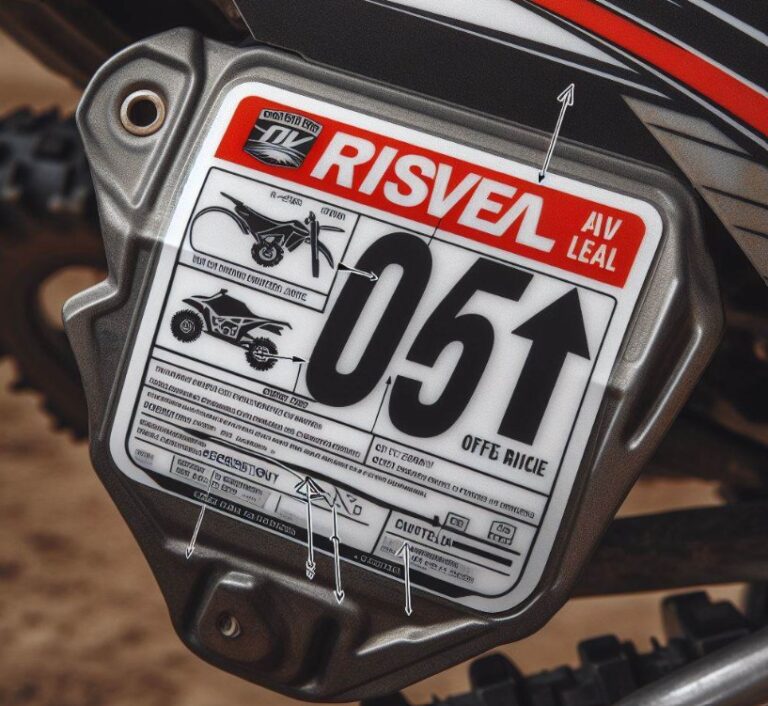Can You Ride A Bike With A Flat Tire? Answered
Navigating the world of cycling, one question often emerges: Can You Ride A Bike With A Flat Tire? This inquiry delves into the implications of attempting such a feat, exploring the balance between immediate necessity and the potential risks involved. Understanding the mechanics and consequences is essential for every cyclist, from beginners to seasoned riders.
Key Takeaways
- It’s technically possible to ride a bike with a flat tire, but not advisable due to safety risks.
- Doing so can cause further damage to the bike’s wheel, rim, and tire.
- Immediate repair or replacement of the flat tire is recommended to ensure safe riding conditions.
- Understanding the causes of flat tires can help prevent them in the future.
Can You Ride A Bike With A Flat Tire?
No, it is not advisable to ride a bike with a flat tire due to safety risks and the potential for damaging the bike.

The Risks of Riding on a Flat Tire
Riding on a flat tire can seem like a quick fix to get you to your destination. However, the risks involved far outweigh the temporary convenience. Firstly, it compromises your control over the bike, making it harder to steer, slow down, and stop effectively.
This can lead to accidents, especially in traffic or on uneven terrain. Secondly, the damage to the bike components can be significant. The rim can become bent or cracked, and the tire itself can be irreparably damaged, leading to higher repair costs.
Safety First: Understanding the Dangers: The primary concern with riding a bike on a flat tire is safety. The reduced control increases the risk of falls and collisions, which can result in serious injuries.
Moreover, the uneven distribution of weight can strain other parts of the bike, leading to potential mechanical failures. It’s crucial to prioritize safety over convenience and address flat tires promptly.
Immediate Steps to Take When You Get a Flat Tire
When faced with a flat tire, the best course of action is to stop riding and assess the situation. If you have the tools and knowledge, a roadside repair might be feasible. Otherwise, seeking professional help or using alternative transportation is advisable.
Repair or Replace: Making the Right Choice: Determining whether a tire needs to be repaired or replaced depends on the extent of the damage. Small punctures can often be patched, but larger tears or repeated flats might require a new tire. Understanding the difference can save time and money in the long run.
Preventative Measures to Avoid Flat Tires
Prevention is key when it comes to flat tires. Regular maintenance checks, including inspecting tires for wear and tear, ensuring proper inflation, and avoiding hazardous roads when possible, can significantly reduce the likelihood of flats. Additionally, investing in puncture-resistant tires or tire liners can provide an extra layer of protection.
The Role of Tire Maintenance in Cycling Safety: Regular tire maintenance is not only crucial for preventing flats but also for ensuring a safe and smooth riding experience. Proper inflation affects the bike’s handling and efficiency, while regular inspections can catch potential issues before they lead to flats.
The Impact of Flat Tires on Your Cycling Experience
Experiencing a flat tire can be frustrating, but it also serves as a valuable learning opportunity. It highlights the importance of preparedness, from carrying repair kits to knowing how to use them. Moreover, it underscores the resilience of cyclists in overcoming challenges and the sense of community when fellow riders offer assistance.
Learning and Growing from the Experience: Each flat tire experience can contribute to a cyclist’s knowledge and preparedness. Whether it’s mastering the skill of tire repair or learning to avoid certain hazards, these experiences enrich the cycling journey, making each rider more adept and resilient.
Is It OK To Ride On A Flat Tire On A Bike?
Riding on a flat tire is strongly discouraged due to the potential risks and damages it poses. When a bike tire is flat, it lacks the necessary air pressure to support the rim and maintain proper contact with the road or trail.

This can lead to a loss of control, making the bike harder to steer and brake effectively. Additionally, riding on a flat tire can cause significant damage to the wheel rim and the tire itself.
The friction generated by riding on a flat can tear the tire apart and bend or crack the rim, leading to costly repairs or the need for replacement. For safety and to avoid further damage to the bike, it’s best to stop riding as soon as you notice a flat tire.
How Long Can I Ride On A Flat Tire?
Ideally, you should not ride on a flat tire at all. The distance you can cover on a flat tire should be limited to the shortest possible distance needed to safely stop and address the issue.
Riding even a short distance on a flat tire can result in damage to the bike’s rim and the tire, which might not be immediately noticeable but can lead to long-term problems and safety issues.

The risk of control loss and potential accidents increases the longer you ride on a flat. If you’re caught with a flat tire, it’s best to walk your bike to a safe location where you can repair the tire or seek help.
What To Do If Your Bike Gets A Flat Tire?
When you get a flat tire on your bike, the first step is to safely bring your bike to a stop in a safe area away from traffic or potential hazards. Assess the damage to determine if the flat is repairable on the spot. If you’re prepared with a repair kit, you can attempt to patch the tube or replace it if you have a spare. Here’s a quick guide:
- Remove the Wheel: Depending on your bike, you may need tools to do this, though many modern bikes have quick-release levers.
- Remove the Tire and Tube: Use tire levers to gently pry the tire off the rim and extract the tube.
- Locate the Puncture: Inflate the tube to find the leak. Listen for escaping air or use water to locate bubbles.
- Patch or Replace: If the hole is small, a patch kit can fix it. For larger issues, replace the tube.
- Reinstall the Tube and Tire: Carefully place the tube back inside the tire and the tire onto the rim, ensuring it’s evenly seated.
- Inflate the Tire: Use a pump to inflate the tire to the recommended pressure.
If you’re not equipped to repair the tire yourself or if the damage is too severe, your best option is to seek assistance from a nearby bike shop. Carrying a mobile phone for emergencies or having the contact information of a local bike repair service can also be invaluable in these situations.
Conclusion
Riding a bike with a flat tire poses significant risks to both the cyclist and the bicycle itself. It compromises safety, and control, and can lead to costly damages.
Promptly addressing a flat tire, either through repair or replacement, is crucial for ensuring a safe and enjoyable cycling experience. Through prevention and preparedness, cyclists can minimize the impact of flat tires on their rides.
People Also Ask
How often should I check my bike tires to prevent flats?
Check your bike tires for proper inflation before every ride, and inspect them for wear and tear or any foreign objects embedded in the tread weekly. More frequent checks may be necessary if you ride in areas prone to causing tire damage or if you’ve recently had a flat.
Can I use a CO2 inflator instead of a pump for flat tire repairs?
Yes, CO2 inflators are a quick and convenient way to reinflate a tire after a repair. However, their one-time use nature and the need for precision when deploying the CO2 cartridge make them a complement to, rather than a replacement for, a traditional pump. Carrying both can prepare you for any situation.
What tools should I carry to repair a flat tire on the go?
A basic bike repair kit for flat tires should include a spare inner tube or patch kit, tire levers, a portable bike pump or CO2 inflator, and a multi-tool for adjustments. These tools will allow you to address most common flat tire issues while on the road.
Is it possible to prevent flat tires completely?
While it’s impossible to prevent flat tires completely, you can significantly reduce their likelihood through regular maintenance, cautious riding, and using protective accessories like puncture-resistant tires. However, always be prepared for the possibility of a flat by carrying a repair kit or knowing how to handle one when it occurs.

Welcome to the exhilarating world of Matt Rex, a professional car racer turned renowned vehicle enthusiast. Immerse yourself in his captivating blog as he shares heart-pounding adventures, expert reviews, and valuable insights on cars, trucks, jets, and more. Fuel your passion for speed and discover the beauty of vehicles through Matt’s engaging stories and meticulous expertise. Join the ever-growing community of enthusiasts who find inspiration and expert advice in Matt Rex’s blog—a digital hub where the thrill of speed meets the pursuit of knowledge.



![Can You Powder Coat Motorcycle Exhaust? [Answered]](https://www.turbochaos.com/wp-content/uploads/2024/02/Can-You-Powder-Coat-Motorcycle-Exhaust-768x689.jpg)



